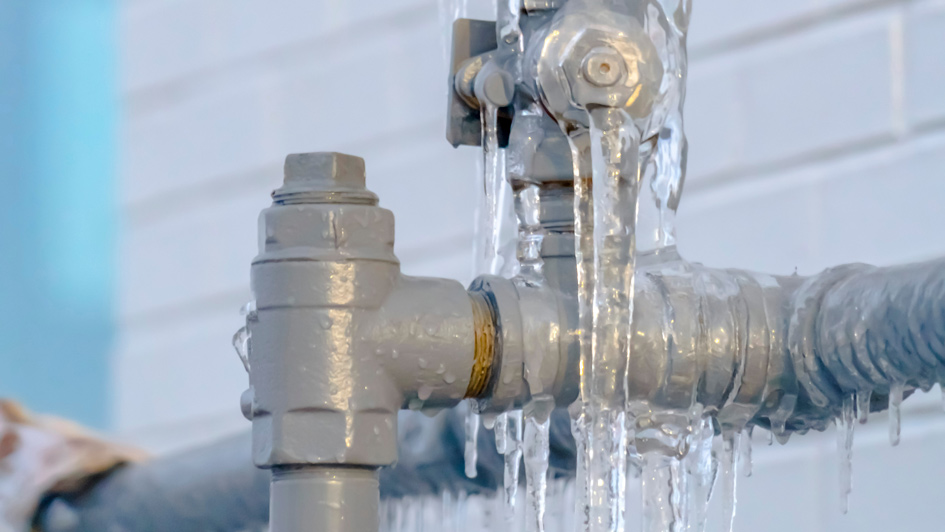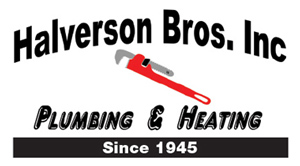
The snowy winter weather offers fun activities like sledding down the highest hill or snowball fights in the front yard. However, winter weather can be tough on your home. Severely cold conditions can cause the water lines in your home to freeze and burst, which could lead to severe water damage and lasting negative effects.
If your pipes are frozen solid, you may want to hire a plumber in Menomonie and western Wisconsin to resolve the issue. That being said, there’s a lot you can perform on your own to stop this from happening – and even minor prevention can go a long way.
What Pipes Are at Risk of Freezing
The pipes at the largest risk of freezing are exposed water lines. Frequent locations for uncovered pipes are in attic crawlspaces, near exterior walls, in the basement or even running underneath a modular home. Water lines that are not properly insulated are at the biggest risk.
How to Keep Pipes from Freezing Over in Your Home
Thoroughly insulating uncovered water lines is a great first step to keeping your pipes safe. You’ll likely find lots of these materials from your local plumbing company, and may also already have some inside your home.
Be mindful not to wrap other flammable insulation materials where they may be caught on fire. If you don’t feel comfortable insulating the pipes by yourself, contact your local plumbing services professional in Menomonie and western Wisconsin to do the job.
If you do prefer to insulate the pipes on your own, common insulation materials for pipes consist of:
- Wraps or roll insulation: Multiple plumbers, hardware stores and national retailers offer insulation – usually fiberglass, foam wraps or pipe sleeves – that you can use to wrap or fit around your pipes. They are sold in various lengths and sizes to suit the needs of your home.
- Newspaper: To some degree, newspaper can be used as insulation. If the weather is going to get cold and you aren’t able to put in more insulation soon enough, wrap uninsulated pipes in this.
- Towels or rags: If you aren’t able to buy insulation and don’t have any newspaper handy, wrapping especially vulnerable pipes with towels or clean rags as a last-ditch effort could be just enough to keep the cold air from freezing the pipes.
Another preventative step you can try to keep pipes from freezing in your home is to seal any cracks that can permit cold air inside your home. Keep an eye on the window frames, which can draw in surprisingly intense drafts. This not only will help to stop your pipes from freezing, but it will have the added benefit of making your home more energy efficient.
Five More Ways to Keep Your Pipes from Freezing:
- Open the cabinet doors. Opening the cabinet doors underneath the sinks and other areas of your home with plumbing will allow more warm air from the rest of the room to get to the pipes.
- Letting water drip. Letting water flow by letting your faucets trickle even a small amount can help prevent frozen pipes.
- Open interior doors. By opening doors in rooms or hallways, your home can be heated more equally. This is especially important if there's a room that is generally colder or hotter than the remainder of your home.
- Close the garage door. The exception to the open doors tip is the garage door, which you should keep closed – especially if your water lines are installed under the garage.
- Keep the heat consistent. Experts suggest setting the thermostat at a stable temperature and leaving it in place, rather than allowing it to get cooler at night. Set it no lower than 55 degrees.
How to Stop Pipes from Freezing in an Empty Home
When you’re at home, it’s easier to know when something isn't right. But what extra steps can you try to keep pipes from freezing in an empty home or vacation home when the consequences from a frozen pipe may not be discovered for a while?
As with your primary residence, adding insulation to any exposed water lines, opening interior doors in the home and winterizing the vacant home are the basic steps to try at first.
Other Steps to Prevent Pipes from Freezing in an Empty Home:
- Leave the heat on. Even though you aren't currently using the home, it’s best to leave the heat on – even if you turn the thermostat down cooler than you would if you were there. As with a primary home, experts suggest keeping the temperature at no lower than 55 degrees.
- Shut water off and drain the lines. If you’re going to be gone for several weeks or are winterizing a rustic cabin or cottage, shutting the water off to the house and emptying the water out of the water lines is a good way to stop pipes from freezing and breaking. Don’t forget to flush the water out of your appliances, like the hot water heater, and the toilets. See to it that you clear out all the water from the system. If you’re unsure of how to clear out the water from the pipes, or don’t feel confident handling it yourself, a plumber in Menomonie and western Wisconsin will be delighted to offer support.






